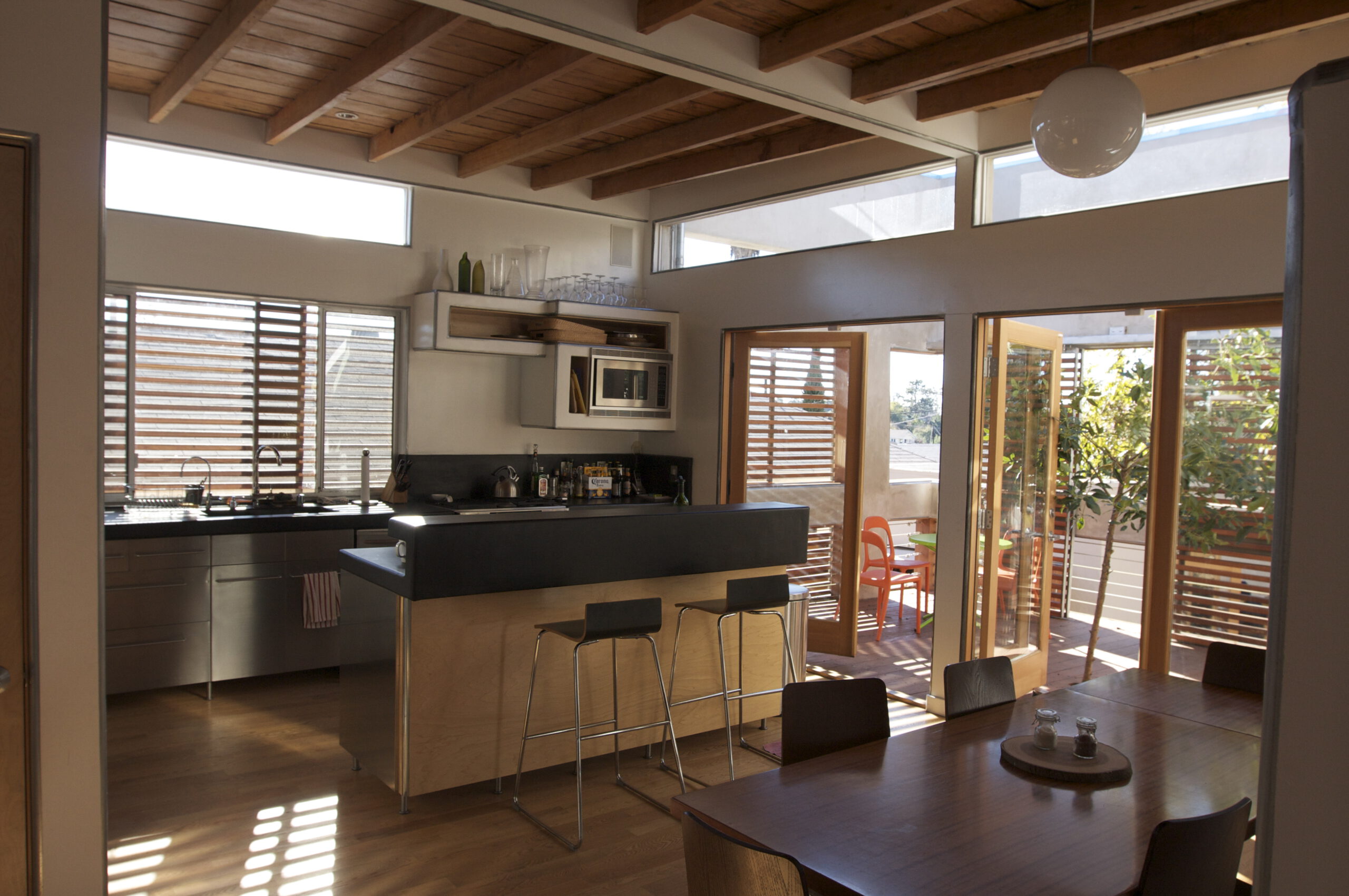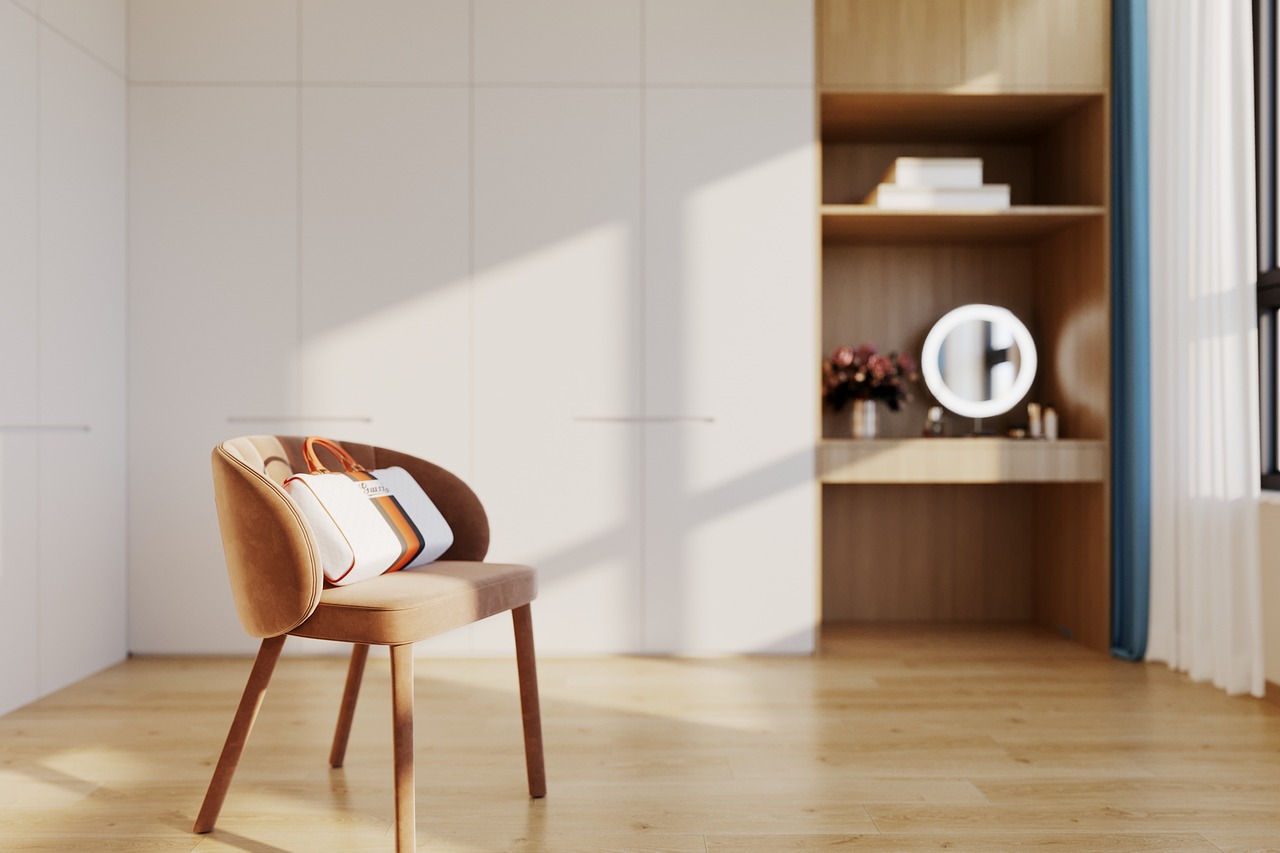Choose Sustainable Materials
When embarking on the journey of eco-friendly interior design, the first step is to choose sustainable materials. These are materials that are sourced responsibly, meaning they are renewable, recycled, or have a minimal impact on the environment. Bamboo, for instance, is a fantastic option due to its rapid growth rate and durability. Reclaimed wood is another excellent choice, offering a rustic appeal while reducing the need for new lumber. By opting for these materials, you’re not just beautifying your home but also taking a step towards preserving our planet’s resources. Furthermore, sustainable materials often carry a unique character, telling a story with every grain and texture, making your home truly one-of-a-kind.
Use Low-VOC Paints
Paints can often emit volatile organic compounds (VOCs), which contribute to indoor air pollution and can have adverse health effects. Choosing low-VOC paints is an eco-friendly decision that enhances air quality in your home. These paints come in a variety of colors and finishes, ensuring you don’t have to compromise on your style preferences. Not only do they reduce the release of harmful chemicals, but they also offer a more pleasant painting experience with less odor. This choice supports a healthier living environment for you and your loved ones, proving that beauty and safety can coexist harmoniously.
Invest in Energy-Efficient Lighting
Lighting is an integral part of interior design, affecting both the ambiance and functionality of a space. Investing in energy-efficient lighting, such as LED bulbs, can drastically reduce your energy consumption. These lights last longer and use less electricity compared to traditional incandescent bulbs. They are available in various styles and colors, allowing you to create the desired mood in each room while being kind to the environment. Energy-efficient lighting is not just a sustainable choice but also a cost-effective one, saving you money on your utility bills in the long run.
Incorporate Natural Light
Natural light is a free and abundant resource that should be maximized in any eco-friendly home. Large windows, skylights, and strategically placed mirrors can help flood your space with sunlight, reducing the need for artificial lighting during the day. This not only conserves energy but also creates a warm and inviting atmosphere. Natural light has been linked to improved mood and productivity, making it a valuable addition to any living space. By embracing the sun’s rays, you create a vibrant and energizing home environment.
Upcycle and Repurpose
Upcycling and repurposing are creative ways to reduce waste and add character to your home. Instead of discarding old furniture or decor, consider how these items can be transformed. An old ladder can become a unique bookshelf, while glass jars can serve as stylish storage containers. By giving new life to existing items, you reduce the demand for new products and the resources required to produce them. This approach not only benefits the environment but also allows you to express your creativity, resulting in a home that’s both sustainable and uniquely yours.
Choose Eco-Friendly Flooring
The flooring you choose can significantly impact your home’s environmental footprint. Eco-friendly options such as cork, linoleum, and reclaimed wood are excellent choices. Cork is harvested from the bark of cork oak trees, which can be done without harming the tree, making it a renewable resource. Linoleum is made from natural materials like linseed oil and jute, offering durability and a classic look. These flooring options are not only sustainable but also provide comfort and style, creating a foundation for a truly eco-conscious home.
Add Indoor Plants
Indoor plants are a simple yet effective way to enhance the sustainability of your home. They act as natural air purifiers, absorbing toxins and releasing oxygen. Plants like spider plants, peace lilies, and snake plants are particularly effective at improving indoor air quality. Beyond their environmental benefits, plants also add a touch of nature to your decor, creating a calming and inviting atmosphere. Incorporating greenery into your interior design is a delightful way to connect with nature and promote a healthier living environment.
Opt for Secondhand or Vintage Furniture
Choosing secondhand or vintage furniture is a sustainable choice that adds character and history to your home. By purchasing pre-loved items, you reduce the demand for new furniture production, which often involves significant resource consumption and waste. Thrift stores, antique shops, and online marketplaces offer a treasure trove of unique pieces waiting to find a new home. Each item carries its own story, adding depth and personality to your space. Plus, vintage furniture often boasts superior craftsmanship, ensuring longevity and style.
Use Organic Textiles
Textiles play a crucial role in interior design, influencing the comfort and aesthetics of a space. Opting for organic textiles, such as cotton, linen, and wool, ensures that these materials are grown and processed without harmful chemicals. This choice supports sustainable farming practices and reduces your exposure to toxins. Organic textiles are not only kinder to the environment but also softer and more breathable, enhancing the overall comfort of your home. By wrapping yourself in these eco-friendly fabrics, you create a nurturing and healthy living space.
Install Energy-Efficient Appliances
Appliances are essential components of any home, but they can also be significant energy consumers. When selecting appliances, look for those with energy-efficient ratings, such as Energy Star certified products. These appliances use less electricity or water, reducing your home’s overall consumption. From refrigerators to washing machines, energy-efficient options are available for every need. This investment not only lowers your environmental impact but also translates into savings on utility bills over time, making it a win-win for both you and the planet.
Reduce Water Waste
Water is a precious resource that should be used wisely. Reducing water waste in your home can be achieved through various means, such as installing low-flow faucets and showerheads. These fixtures maintain performance while significantly decreasing water usage. Additionally, fixing leaks promptly and using water-efficient appliances can further conserve this vital resource. By being mindful of water consumption, you contribute to the preservation of the planet’s water supply, ensuring its availability for future generations.
Decorate with Sustainable Art
Art is a powerful form of expression, and choosing sustainable art can reflect your commitment to the environment. Look for pieces made from recycled materials or created by artists who prioritize eco-friendly practices. Supporting local artists also reduces the carbon footprint associated with transporting art from long distances. Sustainable art not only beautifies your home but also tells a story of creativity and environmental consciousness. Each piece becomes a conversation starter, showcasing your dedication to a sustainable lifestyle.
Insulate Your Home
Proper insulation is crucial for maintaining a comfortable and energy-efficient home. By insulating walls, ceilings, and floors, you can reduce the need for heating and cooling, leading to significant energy savings. Insulation materials such as cellulose, made from recycled paper, or sheep’s wool, are eco-friendly options that provide excellent thermal protection. Effective insulation keeps your home cozy in winter and cool in summer, enhancing comfort while minimizing your environmental impact. This simple step has a lasting effect on both your energy bills and the planet.
Choose Non-Toxic Cleaning Products
Cleaning products can often contain harsh chemicals that are harmful to both your health and the environment. Switching to non-toxic cleaning products is a small change with a big impact. These products are made from natural ingredients, reducing the release of toxins into your home and the ecosystem. They are effective at cleaning while being gentle on surfaces and your skin. By opting for non-toxic alternatives, you create a safer and healthier living environment for your family and contribute to a cleaner planet.
Plan for Longevity

Sustainability in interior design is not just about immediate choices but also about planning for the future. Selecting durable materials and timeless designs ensures that your home remains stylish and functional for years to come. This approach reduces the need for frequent renovations and replacements, conserving resources and minimizing waste. By focusing on longevity, you create a home that grows with you, adapting to changing needs while maintaining its eco-friendly principles. This foresight is a testament to your commitment to a sustainable lifestyle, benefiting both you and the environment.

A visionary in modern design, Nate Berkman is known for his ability to blend timeless elegance with personal storytelling. With years of experience in high-end interiors, his book Living with Style explores how to create meaningful spaces that reflect individuality.

